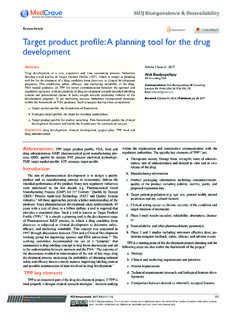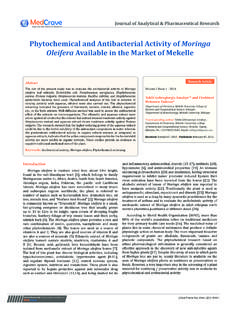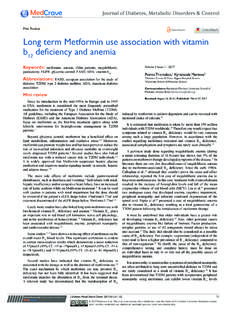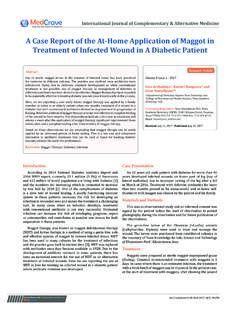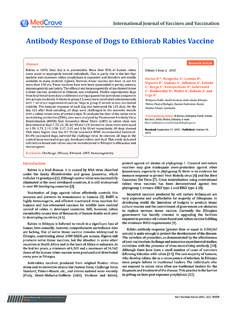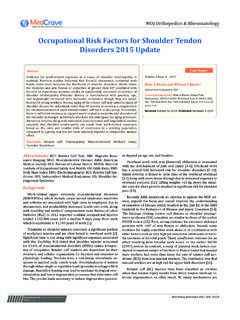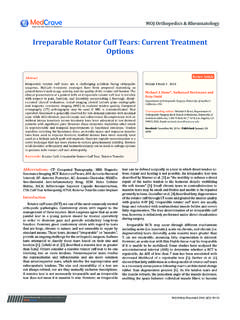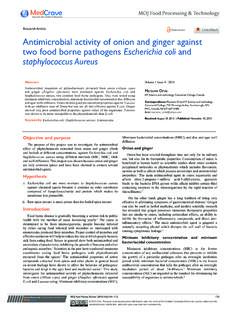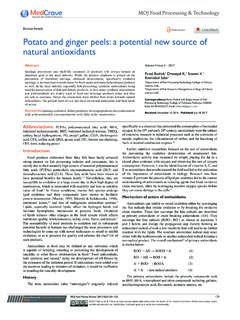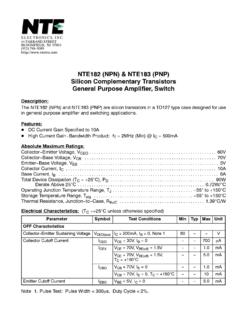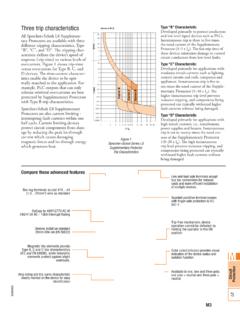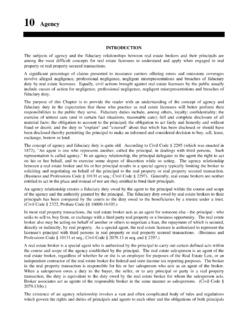Transcription of Hepatitis B Virus (HBV) and S-Escape Mutants: From the ...
1 Journal of Human Virology &Retrovirology Hepatitis B Virus (HBV) and S-Escape mutants : From the beginning until Now Volume 2 Issue 3 - 2015 Priscila Perazzo1, Nair Eguibar1, Rodrigo H Gonz lez2, Alejandro D Nusblat2, and Mar a L Cuestas1*1 Institute of Microbiology and Medical Parasitology, University of Buenos Aires-National Science Research Council (IMPaM, UBA-CONICET), Argentina2C tedra de Biotecnolog a y Microbiolog a Industrial, Universidad de Buenos Aires, Argentina*Corresponding author: Mar a L Cuestas, Institute of Microbiology and Medical Parasitology, University of Buenos Aires-National Science Research Council (IMPaM, UBA-CONICET), 2155 Paraguay St, 11th Floor, C1121 ABG, Buenos Aires, Argentina, Tel: + 54 11 5950 9500 ext.
2 2175; Fax: 54 11 4964 2554, Email: Received: February 19, 2015 | Published: April 18, 2015 AbstractDespite of the progress made in vaccine and antiviral therapy development, Hepatitis B Virus (HBV) infection remains a major health care problem. More than 240 million people are chronically infected worldwide showing differences in the severity of liver disease, clinical outcome and response to immune- and antiviral-therapy. Parameters associated with the host immune system (HBV specific T- and/or B-cell repertoires, defective antigen presentation and diminished Th1/Th2 response ratio) and viral factors such as the HBV genotypes and their evolving variants/ mutants , have largely contributed to explaining such differences.
3 The unique genomic structure and replication cycle of HBV provide much opportunity for mutations to occur in any of its genes undergoing selection pressures, such as those associated with the host immune system, the Hepatitis B vaccine and/or Hepatitis B immune globulin and the antiviral therapy with nucleos(t)ide analogues. Firstly, this review describes the current prevalence of S-Escape mutants worldwide. Secondly, the clinical implications of such surface gene variants and the impact of universal Hepatitis B vaccination on HBV mutations and genotypes are discussed.
4 Finally, the fact that the immune escape process also extends well beyond HBV is : HBV; HBsAg; S-immune escape mutants ; Hepatitis B vaccine; OBI, HBIGS ubmit Manuscript | Hum Virol Retrovirol 2015, 2(3): 00046 Abbreviations: WHO: World Health Organization; HBV: Hepatitis B Virus ; CHB: Chronic Hepatitis B; HCC: Hepatocellular Carcinoma; HIV: Human Immunodeficiency Virus ; ART: Antiretroviral Therapy; OBI: Occult HBV Infection; HDV: Hepatitis Delta Virus ; HBIG: Hepatitis B Immune Globulin; ORF: Open Reading Frame; aa: Amino Acids; HBsAg: Hepatitis B Surface Antigen; cccDNA: Covalently Closed Circular DNA; MHR: Major Hydrophilic Region; MHC: Major Histocompatibility Complex Class; OBH: Occult Hepatitis BIntroductionIn accordance with data provided by the World Health Organization (WHO), Hepatitis B Virus (HBV) chronically infects almost 240 million people worldwide despite the availability of the Hepatitis B vaccine since 1982 [1].
5 Chronic Hepatitis B (CHB) is an important global health concern due to its significant morbidity and mortality. It is the cause of approximately 50% of the world s cases of hepatocellular carcinoma (HCC) and about 30% of all cases of liver cirrhosis [2], leading to over 780,000 annual deaths [3]. In the last few years, considerable progress has been made in the construction and development of effective Hepatitis B vaccines and in the implementation of childhood immunization programs so as to protect future generations. In this regard, in 1992 the WHO passed a resolution which recommended universal infant vaccination against Hepatitis B.
6 As a result, 183 countries around the world have incorporated the Hepatitis B vaccine into their corresponding national childhood immunization schedules [1]. However, several gaps remain to be solved. Firstly, the implementation of Hepatitis B vaccination is still considerably low where it is most needed, especially in Central Africa, where the prevalence rates of HBV infection are the highest to be reported [4,5]. Secondly, some of the vaccinated infants still sometimes get infected due to vaccine- escape mutants [6-9]. Thirdly, in the era of-dual active antiretroviral therapy (ART) used in HBV/human immunodeficiency Virus (HIV) co-infected patients ART-induced vaccine-escape HBV mutants emerged as a new hazard.
7 In this case, vaccine-escape HBV mutants do not arise from attempts to escape selection resulting from the hosts immune surveillance or exposure to Hepatitis B immuno prophylaxis, but from treatment-induced mutations from overlapping genes ( viral polymerase mutations induce both drug resistance and vaccine-escape S gene mutants ) [10]. Lastly, vaccine- escape mutants may also cause occult HBV infection (OBI), that may lead to false negative results in diagnosis (diagnostic- escape mutants ), a problem that may also extend to Hepatitis delta Virus (HDV)/HBV co-infected patients, since the first step in the diagnosis of HDV infection is testing HBsAg-positive individuals for the antibody to the HD antigen [11].
8 Consequently, HBV vaccine- escape mutants still constitute a matter of public health this manuscript, the terms HBV vaccine- escape mutants , Hepatitis B immune globulin (HBIG)- escape mutants , HBV immune- escape mutants and S- mutants will be used indistinctly. Firstly, the present review describes the current prevalence of S-Escape mutants around the world and their clinical implications. Their impact on diagnosis, universal Hepatitis B vaccination, and the effectiveness of the current genotype-A vaccine to induce cross protection against the other genotypes are discussed.
9 Finally, some fresh insights into the growing problem of HBV ReviewHepatitis B Virus (Hbv) and S-Escape mutants : From the beginning until NowCopyright: 2015 Perazzo et : Perazzo P, Eguibar N, Gonz lez RH, Nusblat AD, Cuestas ML (2015) Hepatitis B Virus (Hbv) and S-Escape mutants : From the beginning until Now. J Hum Virol Retrovirol 2(3): 00046. DOI: and/or therapy-escape variants and the finding of an increasing detection of these variants in HIV co-infected patients are structure of Hepatitis B virusHBV is a species of the genus Orthohepadnavirus that is part of the Hepadnaviridae family, whose genome consists of a partially double-stranded relaxed-circular DNA molecule containing four overlapping open reading frames (ORFs): the surface (S-), the core (C-), the polymerase (P-) and the X- genes codifying for all viral proteins [12].
10 The S-ORF includes the sequence assumed to codify the binding sites for the hepatocyte and has three in-frame AUG codons dividing this ORF into three regions, known as Pre-S1, Pre-S2, and S, encoding for these homonym viral envelope proteins [13]. The C-ORF has two initiation codons encoding for the structural protein of the nucleocapsid, which plays an important role in viral particle assembly ( Hepatitis B core antigen [HBcAg]), and a soluble antigen secreted by infected cells ( Hepatitis B e antigen [HBeAg]) [14]. The X-ORF encodes for the Hepatitis B x antigen [HBxAg], which displays trans-activating activity and other regulatory functions [15].
